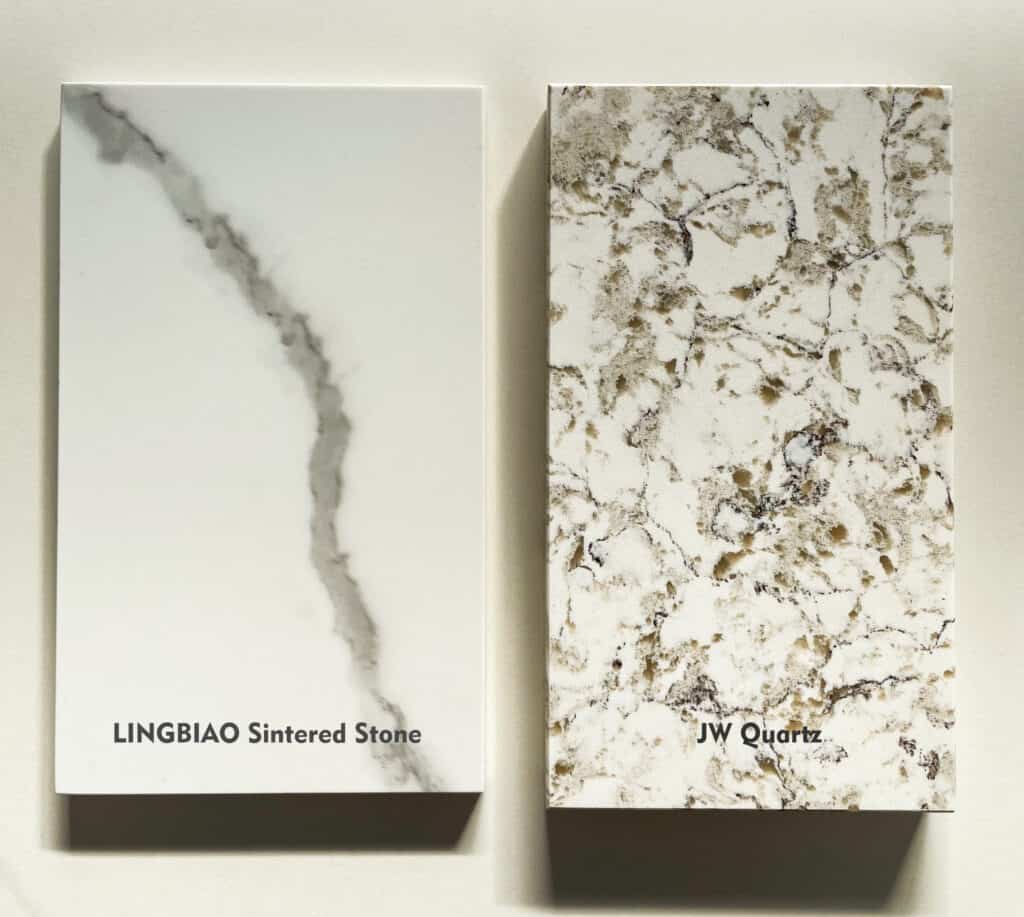When it comes to quartz & sintered stone, a comparison of the materials should really include a variety of aspects. In what ways are the two materials alike and what are the distinguishing features that we can tell sintered stone from quartz? Today we will talk about both aspects.
Lets take a closer look at the two materials and get to know what commonalities they share and why. First of all, both quartz and sintered stone are harder than granite, which has the range of 6-7 mohs hardness. This is what makes these materials tenacious and resistant to scratch. One more thing that you need to know is that although both materials are very hard, sintered stone is even harder than quartz.
Another similarity that sintered stone and quartz share is that both materials are impervious due to their non-porousness. It’s easy to clean up these materials because the stain-causing agents simply stay on the surface and are unable to get into it.
Last but not least, both quartz and sintered stone have a variety of color options as the result of that these two materials are produced in a controlled environment so that they can be made to specifications, which means that the color and pattern are controllable.
Although sintered stone and quartz share a lot in common, that does not mean these material are the same. In fact, they are very different from one another. Now let’s take a look at some of the differences between sintered stone and quartz.
The main difference between sintered stone and quartz is their composition. Sintered stone is composed entirely of natural minerals. The minerals are transformed into a new material through the process known as “sintering”, by using intense heat and other forces like pressure and electricity to transform the minerals into a solid hard mass of a new material. While quartz is a combination of the natural mineral quartz (around 90%) and the balance of the material made up of pigments and resin binders.
The difference in composition between sintered stone and quartz means that they have different care requirements. Quartz can be susceptible to burning from high temperatures while sintered stone is very stable in the same situation. Quartz can discolor when exposed to extreme heat because of the limits imposed by the resins in the material. On the other hand, sintered stone is formed in the presence of extremely high temperatures and is therefore resistant to very high temperatures found in normal everyday household environments.
So nowadays sintered stone is becoming more and more popular. Large panels and other dimensions are among the sizing choices form which to choose so that they can be used for wall cladding and facades as well as flooring, even countertop and more.

